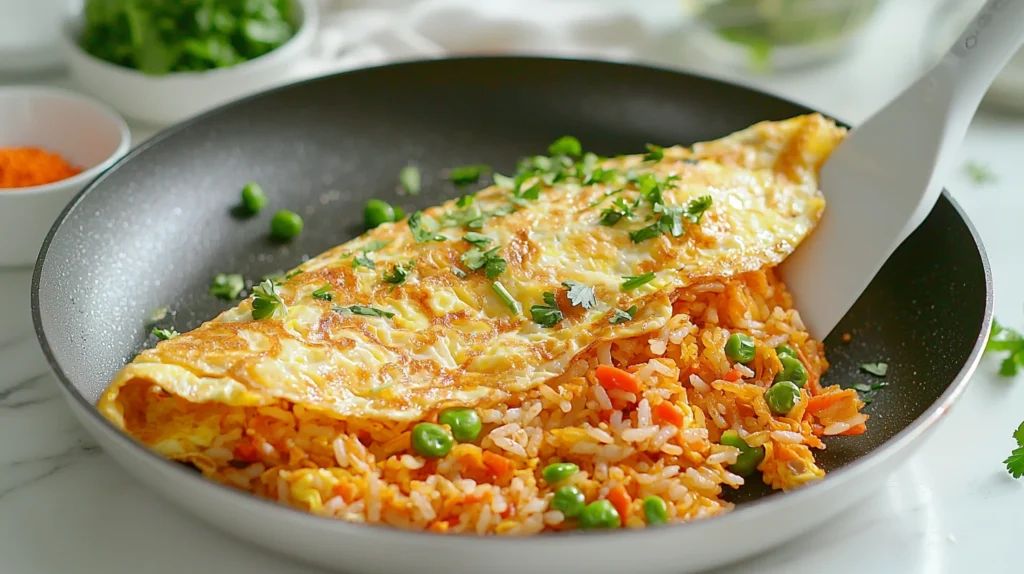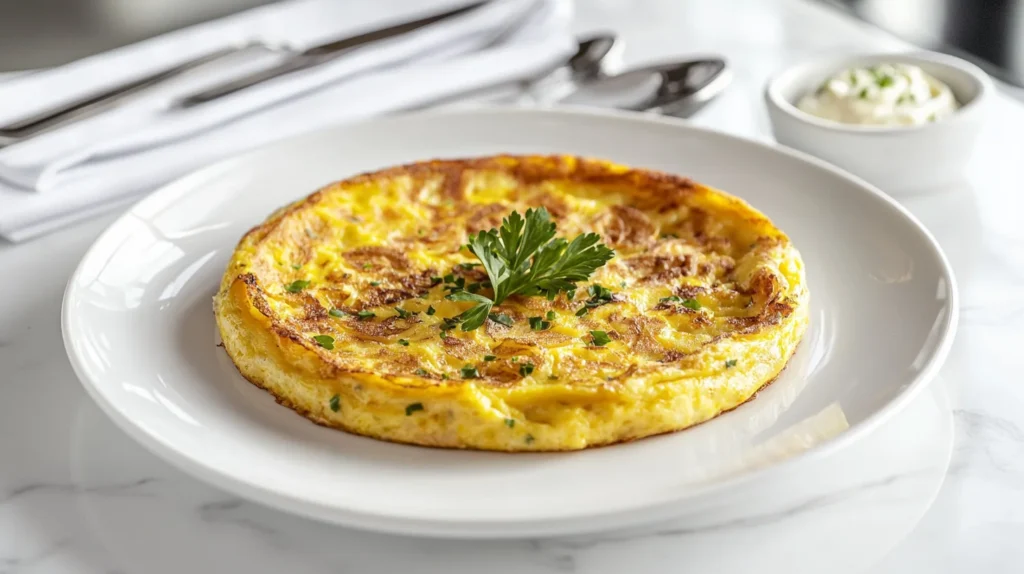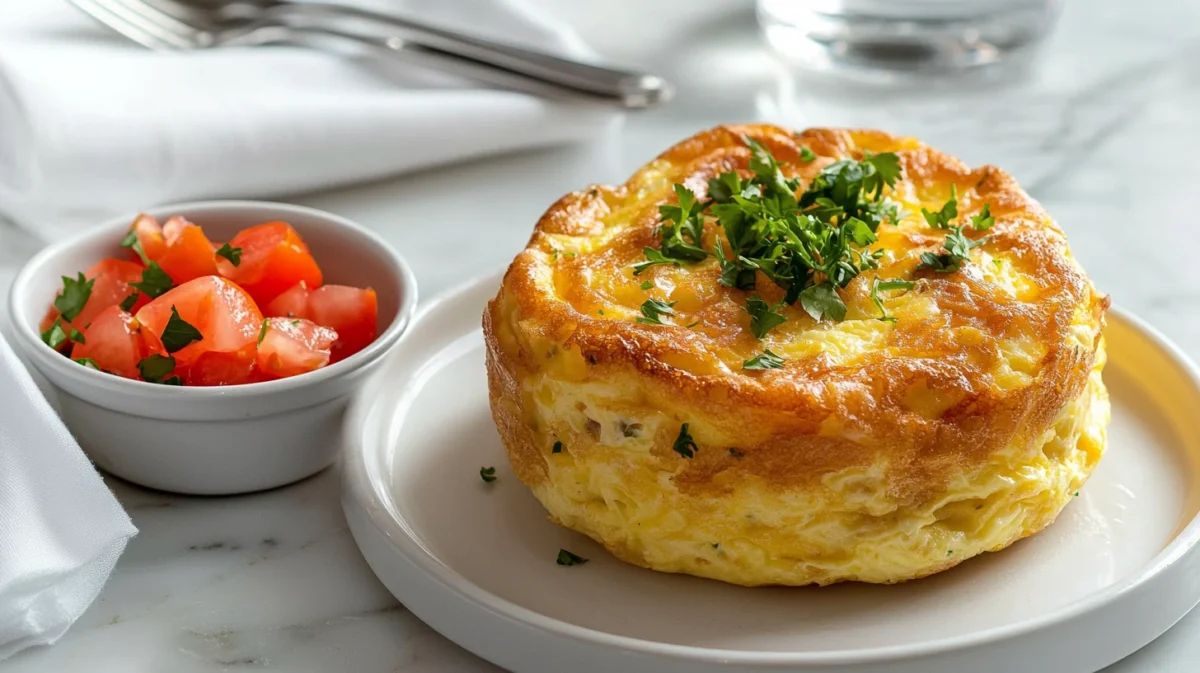Have you ever wondered, What is the hardest type of omelette to make? Omelettes might seem simple, but some styles can truly test your skills in the kitchen. From mastering the perfect flip to achieving the right texture, these challenges keep even experienced cooks on their toes. But don’t worry—it’s all part of the fun!
Making a difficult type of omelette is like solving a tasty puzzle. First, it’s about understanding the technique. Then, it’s about balancing patience and precision to create something extraordinary. Also, let’s not forget how rewarding it feels when you finally get it right!
Ready to take your cooking skills to the next level? This guide will walk you through some of the trickiest omelette types and why they’re worth the effort. Keep reading—you’re about to crack the secrets behind these culinary challenges!
Table of Contents
Mastering the Most Challenging Type of Omelette Style
Why Some Techniques Define the Hardest Type of Omelette to Make
Not all omelettes are created equal, and that’s part of the fun! Some require precise timing and delicate handling. Others demand confidence, especially when flipping or folding. It’s no wonder people ask, What is the hardest type of omelette to make? One tricky aspect of this type of omelette is achieving the perfect texture. For example, fluffy omelettes need just the right heat and whisking. Meanwhile, thin ones demand quick movements to avoid overcooking.
Next, consider the pressure of presentation. Omelettes like the Japanese omurice need an expert flip to reveal their soft insides. On the other hand, a French omelette must stay creamy without looking messy. These little details can make the simplest dish feel like a big challenge. But don’t worry! With practice, even the hardest omelette becomes doable. Start with one type, then work your way up. You’ll have fun cracking this eggy puzzle!
For creative twists, you might explore unique recipes like this crab omelette recipe for more culinary inspiration.
Key Factors That Separate the Hardest Type of Omelette Recipes
Several factors separate a simple omelette from a challenging type of masterpiece. For instance, recipes like a soufflé omelette or dishes similar to what is the most famous omelette require high levels of skill and patience.
Next, ingredient preparation can make or break your success. Proper egg handling plays a crucial role here. For important food safety guidelines on handling eggs properly, check out the FDA’s guide on egg safety.
Some types of omelette styles, like the Spanish tortilla, require precise layering to cook evenly. Others, like the frittata, test your patience with thicker fillings that need even heating. And let’s not forget presentation. A well-made omelette should look as good as it tastes. The shape, fold, and surface all count!
If you’re exploring complementary flavors, consider these popular omelette pairings to inspire new combinations. Finding the right accompaniments can elevate your omelette game to the next level!
But don’t let that intimidate you. Even the hardest omelette recipes become fun challenges with practice. So grab your whisk and try something new. Remember, every flip brings you closer to mastering this type of omelette!
What Makes the Soufflé Omelette the Hardest Type of Omelette?
Understanding Why This Type of Omelette Is So Hard
The soufflé omelette is a real showstopper, but it’s also one of the trickiest to master. The magic lies in its airy texture, which comes from perfectly beaten egg whites. When folded into the yolks, the mixture traps air, creating the signature fluffiness. However, this is where things get tricky. If you overmix, the air escapes, and the omelette falls flat. Under-mixing can leave streaks of egg whites that won’t cook evenly.
Next, the cooking process demands precision. A soufflé omelette needs gentle heat to puff up without burning. Also, the timing is critical. Too long on the stove, and it collapses. Too short, and it’s undercooked.
But don’t be discouraged! This is like a fun science experiment in the kitchen. For even more tips and creative ideas, follow us on Facebook for cooking inspiration or check out our latest recipes on Instagram. Practice your whisking, be patient with the heat, and you’ll nail it. Trust me—your first fluffy bite will be worth the effort!
Common Mistakes When Attempting This Type of Soufflé Omelette
Making a soufflé omelette can feel like walking a tightrope, but avoiding a few mistakes can help. First, pay attention to your egg whites. Whipping them to stiff peaks is essential. If they’re too soft, your omelette won’t rise. On the other hand, over-whipping makes them dry and harder to fold into the yolks.
Next, temperature control is key. High heat can burn the bottom while leaving the middle raw. Instead, use medium heat and be patient. Also, don’t skip the pan preparation. A nonstick pan with a bit of butter helps you remove the omelette without tearing it.
Finally, don’t rush the folding. Carefully fold the egg whites and yolks to keep the air inside. The result? A perfectly puffed omelette that looks as good as it tastes. Keep practicing, and soon you’ll master this impressive dish!
The Skill Behind Japanese Omurice Omelettes
Timing and Precision in Perfecting This Hard-to-Master Omelette Type
Japanese omurice is not just an omelette—it’s an art form. This type of omelette requires the perfect balance of timing and technique, making it one of the hardest to master. The secret lies in the thin, silky omelette that wraps around a flavorful fried rice filling. But achieving that smooth texture is easier said than done.
First, the eggs need to be cooked over low heat, and they must be stirred constantly to create a creamy consistency. Then comes the tricky part—flipping the delicate omelette onto the rice without tearing it.

Timing is everything here. Too much time on the heat can make the omelette stiff, while too little leaves it undercooked.
But don’t let that intimidate you! Like any challenge, it gets easier with practice. Take your time, enjoy the process, and before you know it, you’ll wow everyone with your omurice skills. For more globally inspired omelette ideas, check out other international takes on omelette recipes.
How to Perfect the Hardest Type of Japanese Omelette
Getting the consistency of your omurice just right can feel like a daunting task, but a few tips can help. First, start with fresh eggs. Fresh eggs whisk better and give you a silkier omelette. Whisk them gently until the yolks and whites are just combined. Over-whisking can introduce too much air, which might cause uneven cooking.
Next, use a well-heated, nonstick pan. Butter adds flavor and helps prevent sticking, but don’t let it brown—it can affect the smooth texture. When cooking, use a spatula to gently stir the eggs in the pan. This creates soft curds while keeping the omelette thin and pliable.
Finally, when folding the omelette over the rice, be gentle and precise. Don’t rush. Even if it’s not perfect, it will still taste delicious. And remember, every attempt gets you closer to the flawless omurice experience!
Why French Omelettes Are the Hardest Type of Omelette to Perfect
Balancing Texture in the Hardest Type of French Omelette
French omelettes are deceptively simple but demand precision and patience to master. Their hallmark is a soft, velvety texture with no browning, which makes them one of the hardest types of omelettes to perfect. Achieving this balance between softness and structure in this type of omelette is where the challenge begins.
First, the eggs must be whisked thoroughly to create a smooth mixture. Any lumps or uneven mixing can ruin the texture. Then, the cooking process is all about control. Using low heat, you must stir the eggs constantly while tilting the pan. This ensures the omelette cooks evenly without developing any crust.
To learn more about crafting omelettes with unique fillings, you might find inspiration in this recipe featuring sardines and cheese as an example of adventurous ingredient pairing.
Next, the folding technique requires confidence and care. One wrong move, and the omelette could break or stick. But don’t worry—it’s a fun challenge to try! With practice, you’ll learn to make this classic dish that’s as satisfying to create as it is to eat.
Mistakes to Avoid When Mastering This Type of French Omelette
Making a French omelette can be tricky, especially for beginners, but avoiding common mistakes makes all the difference. First, many cooks use high heat, which leads to overcooking or browning the eggs. Instead, keep the heat low and focus on gentle movements to maintain the smooth texture.
Next, over-whisking the eggs can introduce too much air, causing the omelette to puff up and lose its delicate creaminess. Aim for a light whisk to combine the yolks and whites just enough. Also, be mindful of the folding step. A rushed fold might tear the omelette, while hesitating can cause it to stick.
Finally, don’t overload the filling. French omelettes are about simplicity, so use minimal ingredients like herbs or cheese. Practice these steps, and soon you’ll be creating French omelettes that are as beautiful as they are delicious!
Spanish Tortilla: The Omelette with a Twist
Why This Type of Omelette Is One of the Hardest
A Spanish tortilla may look simple, but its layered ingredients add complexity that makes it one of the hardest types of omelettes to perfect. This traditional dish combines potatoes, onions, and eggs into a thick, satisfying omelette, but each step requires precision and patience.
First, the potatoes and onions need to be cooked just right—soft but not mushy. Timing is crucial here, as undercooked ingredients can ruin the texture. Next, layering the cooked mixture with the beaten eggs must be done evenly to ensure consistent cooking. Without proper layering, some parts may stay raw while others overcook.

Then comes the flip, which is where things often go wrong. Turning this type of omelette without breaking it takes practice and confidence. But don’t worry—your first attempts might be messy, but they’ll still be tasty. Stick with it, and you’ll soon master this hearty and flavorful dish.
Techniques for Perfectly Cooking a Spanish Tortilla
Cooking a Spanish tortilla to perfection requires attention to detail and a few key techniques. First, start with thinly sliced potatoes and onions. This helps them cook evenly in the oil without turning mushy. Use low to medium heat for this step, as rushing can cause uneven textures.
Next, combine the cooked vegetables with the beaten eggs and let the mixture sit for a few minutes. This helps the flavors meld and ensures the eggs coat everything evenly. When cooking, use a nonstick pan to avoid sticking and achieve a clean flip.
Speaking of flipping, use a plate or flat lid to help turn the tortilla with confidence. If it’s not perfect on the first try, don’t stress—it’s part of the process. With practice, you’ll create a Spanish tortilla that’s golden, tender, and absolutely delicious. Keep at it, and you’ll get there!
How a Frittata Pushes the Boundaries of Omelette-Making
Tips for Managing Thickness in a Frittata
A frittata takes omelette-making to the next level with its hearty thickness and rich fillings. However, managing that thickness is where the real challenge lies. Unlike traditional omelettes, a frittata is cooked slowly to ensure even doneness from top to bottom. This makes it one of the hardest types of omelettes to perfect.
First, the key is to cook over low heat. This prevents the bottom from burning while the middle stays raw. Next, the fillings need to be evenly distributed. Whether you’re adding vegetables, cheese, or meat, balance is everything. Too much of one ingredient can make the frittata soggy or unevenly cooked.
Finally, transitioning from stovetop to oven helps achieve that perfect consistency. The gentle baking ensures the eggs set without overcooking. Don’t rush—it’s worth the wait! Follow these tips, and you’ll soon master this delicious and impressive dish.
Achieving Even Cooking and Rich Flavor in a Frittata
Cooking a frittata evenly requires attention to detail and a few helpful tricks. First, make sure your ingredients are pre-cooked and at room temperature before adding them to the eggs. This step prevents uneven textures and ensures everything cooks together perfectly.
Next, start the frittata on the stovetop over low heat. Stir gently to avoid sticking and to help the mixture set evenly. Then, transfer the pan to the oven to finish cooking. This allows the top to set without overcooking the bottom.
For extra flavor, add a sprinkle of cheese or fresh herbs before baking. These simple touches take your frittata to the next level. And remember, patience is key. Let it cool slightly before slicing to keep it from falling apart. Stick to these steps, and you’ll create a frittata that’s both beautiful and delicious every time!
Frequently Asked Questions (FAQs)
What is the hardest egg style to make?
The hardest egg style to make depends on technique and precision. Many consider the soufflé omelette the hardest because it needs perfectly whipped egg whites and careful cooking. The Japanese omurice is also a contender, with its thin, delicate omelette that wraps around a rice filling.
These styles require attention to detail and steady hands. For example, overcooking or under-whisking can easily ruin the dish. French omelettes, with their creamy texture and no browning, also test your skills. Each style is tricky but rewarding, so keep practicing.
Why is omurice hard to make?
Omurice is hard to make because it requires precision and perfect timing. The thin omelette must be cooked evenly, soft, and delicate, which is no easy task. Also, the omelette has to wrap neatly around the rice without tearing or breaking.
Timing is critical when flipping the omelette onto the rice. Too soon, and it will stick; too late, and it overcooks. The process also demands practice to get the right consistency for the eggs. Despite the challenge, mastering omurice is incredibly satisfying. Once you get it, the result is as fun to make as it is to eat!
Are omelettes difficult to make?
Omelettes can be as simple or as challenging as you want them to be. Basic omelettes are easy for beginners and a great way to practice cooking eggs. However, advanced styles like the French omelette or soufflé omelette can test even experienced cooks.
The difficulty lies in achieving the perfect texture. For example, French omelettes need constant stirring, while soufflé omelettes require fluffy, evenly beaten egg whites. Timing is also key, as overcooking can ruin the dish. But don’t worry—practice makes it fun! Start with easy styles, and work your way up to the tricky ones.
What makes a soufflé omelette so tricky?
A soufflé omelette is tricky because it relies on perfectly whipped egg whites for its iconic fluffy texture. Over-whipping can make the whites stiff and hard to fold, while under-whipping leaves them too soft to hold air. Mixing the yolks and whites together also requires a gentle hand to avoid deflating the mixture.
Next, the cooking process adds to the challenge. It needs low, steady heat to puff up evenly without burning. Timing is everything, as overcooking can make it collapse. While it’s not easy, the result is light, airy, and absolutely worth the effort!
Why Challenging Omelettes Are Worth the Effort
Mastering a challenging omelette might seem intimidating, but it’s also incredibly rewarding. From the delicate soufflé to the precise French omelette, each style offers a unique experience. Trying these recipes is not just about cooking; it’s about learning new skills and pushing your creativity. You’ll appreciate every flip, whisk, and fold even more once you taste the result.
First, challenging omelettes teach patience and technique. Each attempt brings you closer to perfecting the texture and flavor. Also, these recipes let you impress family and friends with your cooking skills. There’s something special about serving an omelette that looks as good as it tastes.
So why not give it a try? Start with one style and practice until it feels easy. You’ve got this! Remember, the hardest type of omelette to make is also the most fun and satisfying to master. Grab your whisk and get cracking!
We’d love to hear your thoughts! Let us know your favorite omelette style or share your tips in the comments below.

